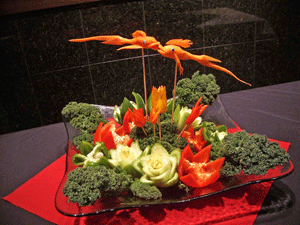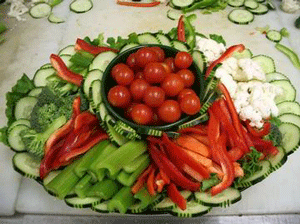
Equipment
Storage - Personal Gear Okay here is the storage section for your tools. I have tried metal cases, rollup bags, fold up bags, tool boxes and belt sheaths. I have had partial success with them all, but only partial. Over the years there has been one thing or another that has made them obsolete. Usually the fact that they are hard to store while you’re working. So after searching and making do with many different ideas, I stumbled on what seems to work the best so far … and I’ve been using it for the past 5 years. The converted Hydration Pack! 1. Purchase a hydration pack of your choice … around $20.00. 2. Remove the bladder from the pack. 3. Take a sheet of flexible plastic and fold in half to create a pocket big enough to fill main storage section of pack in front when unzipped. Then the pocket will have to be sealed on the bottom and the side leaving the top open to insert and remove knifes. (Or by taking two pieces, example 2 flexible cutting sheets – heavy mil. and sealing both sides and bottom by sewing the edges with either fishing line or nylon twine.) 4. Take the inner shell and place inside the main compartment of the pack to protect the nylon. Make sure to measure the plastic to fit the full length of the back and cut a dip or uncovered area in the front to allow the insertion and removal of your knifes. You need to be able to see your handles when they are inside the plastic pocket. 5. Your knives need to have individual sheaths. You can either purchase them for $2-5.00 ea. or you can make them from cardboard and staples. I prefer the cardboard, each knife has a unique shape and sheath. Each sheath is created so the knife can be protected from other items in the bag, yet can be easily removed from the sheath and easy returned without removing the sheath from the bag. 6. Arrange the knives with the longest in the back and shorter to the front of the cutout area. I did this for the medium to longer blades and tools only. 7. Paring knives have a cardboard pocket which is placed in front of the plastic tube ontop, yet inside the pack flap that zips up. So everything is protected when zipped. 8. End result is that I have a thin backpack that holds all my equipment. a. I can lay the pack down with the top facing me, unzip it and let the flap hang. All my knives are now available to me and after using one, I can rinse, sanitize and replace it without hassle. At the end of the shift, I no longer am missing any tools because I know what is missing when the sheath is empty. b. In the very front zipper pocket of the bag I carry my zester, can opener, pastry brush, peeler and other odd assorted items … non sharp. Only gets opened when I need them. c. In the top zipper pocket on the flap I carry marking pens, writing pens, knife sharpener, Band-Aids, small notebook. d. In the pocket under that pocket I carry my food handler’s card, business cards and cookie cutters in a tin. e. In the back between the carrying straps, where the water bladder previously resided before being removed is where I carry a flexible cutting board, extra latex gloves and sanitizer. With this kit I no longer have to worry about where my stuff is as long as I remember to put it in the catering van or in my car. I never leave my bag overnight anywhere unless you have a locking office or storage locker. To replace my tools would require around $1000, but my tools have made me hundreds of thousands of dollars over the years. Since the pack has straps, you can hang it just about anywhere to keep it out of the way during your shift or stash it under a prep table as you work.
|










